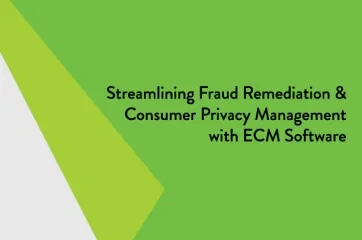With credit document imaging, financial institutions leverage technology to scan, save, and organize information that pertains to borrowers. Credit document imaging has become increasingly important in recent years, especially for understanding complex commercial lending relationships. Credit document imaging can also support consumer lending relationships, although usually to a lesser extent compared to commercial.
Types of Credit Documents to Image
For a consumer relationship, credit document imaging could be as simple as saving the borrower’s driver’s license, pay stub, CIP verification, and a few other documents. Commercial lending relationships, however, often involve hundreds of pages of documentation and a variety of document types. Examples include:
- Articles of incorporation
- Certificates of good standing
- Risk assessment worksheets
- OFAC documentation
- Customer information profile (CIP) verifications
- Borrowing resolutions
- Form W-9 (Request for Taxpayer ID)
- Operating agreements
- Bylaws
- Account receivable statements
- Inventory statements
- Tax returns
- Corporate financials
Articles of incorporation and other documents may only need to be collected once, while other records must be continually updated based on the borrowed amount and relationship. For example, a common practice is to request quarterly or annual financial statements from commercial borrowers. Tax returns and insurance are usually collected annually.
Efficient Tracking, Flexible Imaging
As a financial institution expands its commercial loan portfolio, keeping pace with its document management needs can become increasingly complicated. Tracking documents in a spreadsheet or tickler is a common practice for avoiding credit document exceptions, but manual data entry can lead to reporting errors. Offering a convenient way for borrowers to provide information is key for reducing credit exceptions. After all, not every borrower enjoys printing and mailing hard copies.
Implementing a document imaging and tracking system like AccuAccount can simplify credit document management. Prebuilt exception reports, email notices, drag and drop imaging, and flexible scanning solutions support an efficient credit imaging workflow.
Read more definitions or download a free resource from Alogent’s Innovation Hub.














